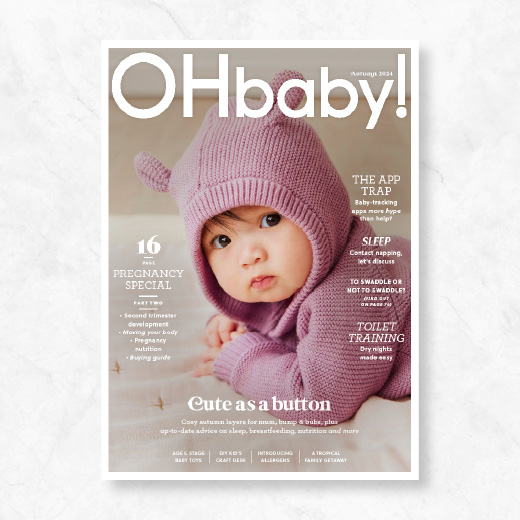How to make the move away from contact sleeping

Baby and child sleep expert, Annette Faamausili gives gentle advice for parents looking to transition out of contact napping.
Imagine this scenario: your baby is nestled comfortably in your arms, feeling warm and secure. They can sense the rhythm of your heartbeat, the gentle sway of your body and the familiar smell of your skin, offering continuous comfort and reassurance. In this comforting space, why would they wish to sleep anywhere else?
During the first months of life, cuddling and holding your baby while they sleep feels intuitive, what nature intended and what your baby’s preference is. Napping feels easy and effortless, and your baby doesn’t even have to think much about the process of falling asleep. Everything seems to work in harmony until you attempt to move them to their bassinet or cot.
There is nothing wrong with contact napping and for many parents it feels like the ideal option. Perhaps you have an older child who has activities to attend, and having the convenience of a front carrier can be a real-life saver when your little one decides to take a nap while you’re out and about.
| "If it works for you, and both you and baby are getting the rest you need, there’s no need to make any changes. Continue contact napping for as long as it feels right, and suits your situation." |
If it works for you, and both you and baby are getting the rest you need, there’s no need to make any changes. Continue contact napping for as long as it feels right, and suits your situation. Don’t feel pressured or compelled to establish a structured nap schedule just yet. There’s plenty of time for that later down the track.
However, if you do choose to let your baby snooze on you, it’s important you do it safely. Make sure you don’t let your baby fall asleep while propped up on a sofa or any soft surface. Your baby could overheat or get trapped along the side of the sofa if you happen to fall asleep yourself.
If you're finding that contact napping is no longer suiting you and your baby’s needs, it might be time to consider a change. Perhaps the prospect of returning to work is looming, or your once peacefully napping baby is now easily distracted by an active older sibling – making it difficult to accomplish tasks. Or maybe contact naps are becoming shorter, less predictable and irregular, leading to bedtime crankiness.

HOW TO MOVE AWAY FROM CONTACT NAPPING
Start off slow… transitioning away from contact napping requires a gradual approach. If you’re aiming to help your baby learn to sleep independently, patience and timing is key.
It’s unrealistic to expect your baby, who’s used to peacefully napping in your arms with the reassurance of your warmth and closeness, to suddenly embrace sleeping alone. Instead, try and introduce props and rituals that will help make sleep tangible to them and ease them into independent sleep.
Start off by ensuring all naps begin and take place in a consistent sleep environment, such as cuddles in a rocking chair in their bedroom or usual designated sleep space. Introduce white noise and a breathable comfort toy that carries your comforting scent. Make sure the room is dark and free from distractions and use the same bedding, like a sleep sack or swaddle, for all sleep times to create a sense of familiarity.
Most importantly, make sure your baby is genuinely ready and willing to sleep and has built up enough sleep pressure, making them more inclined to embrace independent sleep.
Once your feel your baby is ready to sleep, gently place them down in the cot while they’re still awake. Stay with them until they fall asleep, offering reassurance by placing a hand on their chest or gently stroking their head if necessary. Once your baby gets the hang of sleeping in their cot, you can gradually reduce your proximity and touch over time.
Remember, consistency is key. If you follow the same rituals every day prior to nap time your baby will become accustomed to sleeping independently in their cot in no time at all.
Annette Faamausili is a baby and child sleep expert and has been advising and supporting parents since 2001. She trained and qualified in the NHS, UK, and moved to New Zealand with her Samoan husband and family in 2011. Annette has three children (Matilda 17, Oscar 15, and Lola 9) and lives on the beautiful Whangaparaoa Peninsula in Auckland. Find her at serenesleep.co.nz.

AS FEATURED IN ISSUE 65 OF OHbaby! MAGAZINE. CHECK OUT OTHER ARTICLES IN THIS ISSUE BELOW

















